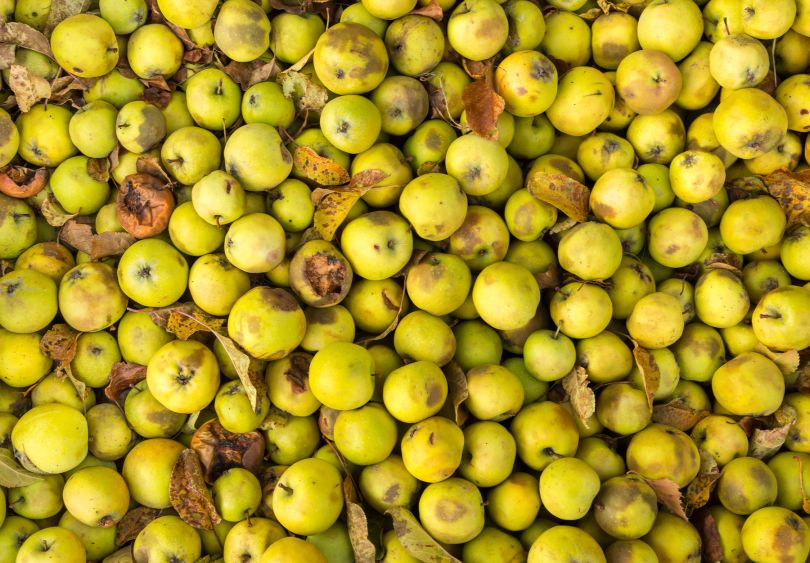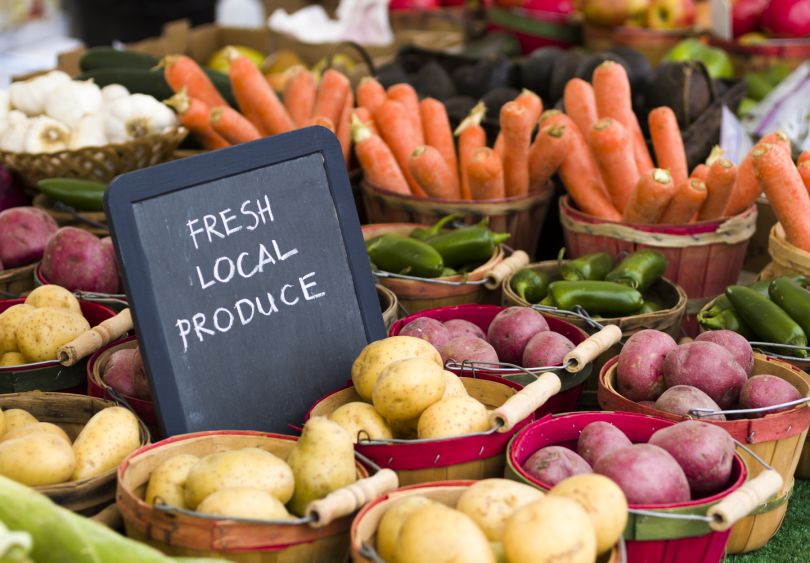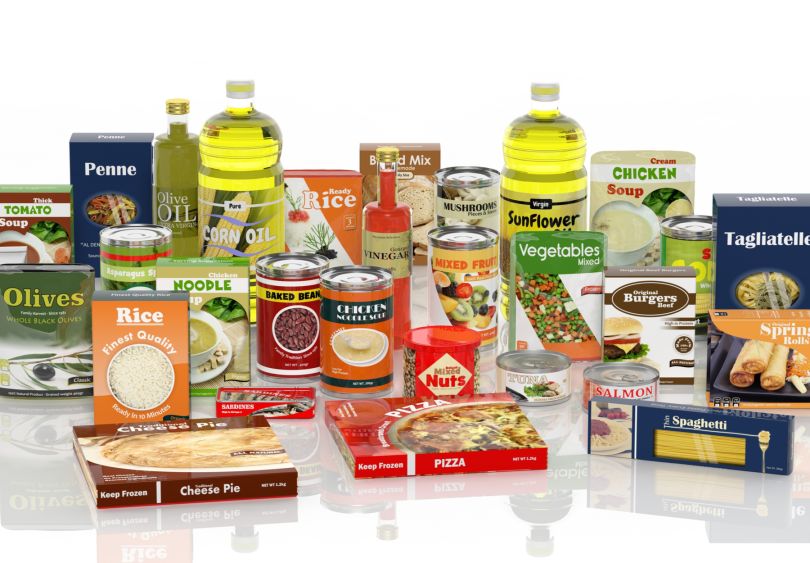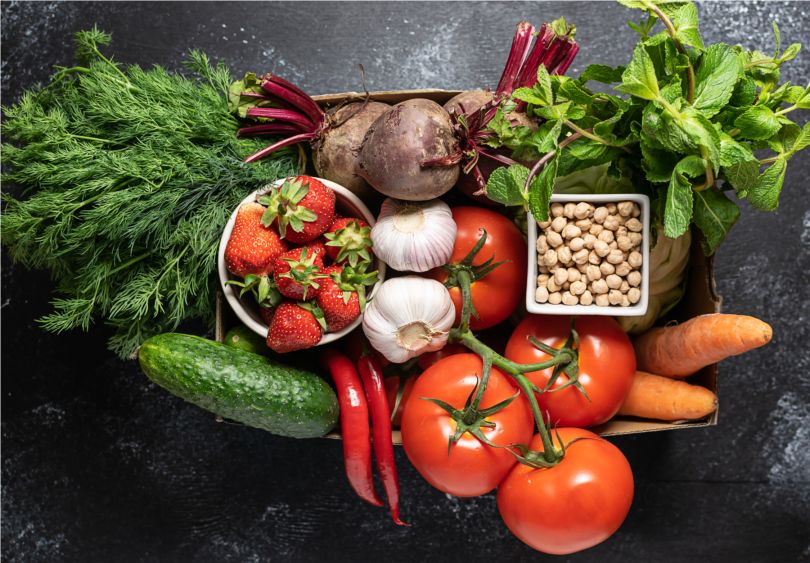The number of total unemployment claims filed in the United States throughout the now-months-long COVID-19 recession just surpassed 44 million.
As restaurants and institutions were forced to shut down or drastically curtail their operations, and the financial repercussions spread to the rest of the economy, many Americans found themselves out of a job and struggling to pay for basic necessities such as rent and food. In April, Feeding America, a network of 200 food banks across the country, reported that demand across its affiliate food banks has increased on average by 40 percent.
And yet, at the same time, reports about mountains of surplus produce and thousands of acres of harvestable crops being plowed under appeared in the news. It was disturbing to see so much food go to waste at a time when the need for it was greatest. Why couldn’t farmers simply redirect their surplus to the people who needed it?
The reason is that the food industry, with its complex network of sellers, buyers, processors and supply chains, was experiencing its own significant upheaval. In response, many organizations have worked hard over the past few months to bridge the gap between glut and scarcity. Many of these organizations are businesses or nonprofits that are part of the agricultural industry, while some had no experience with it before. They scrambled to form new partnerships, develop new sales channels and adopt new technologies, sometimes building entirely new supply chains up from scratch, all the while racing against the clock to save as many of the perishable goods that are the product of their industry’s labor as possible.

Food Loss Affects All Aspects of Agriculture
Food sometimes seems like the most boring of industries. You go into the grocery store and it’s always there, looking pretty much the same from week to week. There are red, yellow and green bell peppers. There are apples and tomatoes and garlic. Food begins to seem like any other mass-produced product, manufactured for our convenience off an endless assembly line somewhere.
But behind the scenes, there is a mad dash to get the food from farms, livestock producers and fisheries to consumers, with as little loss from damage or spoilage as possible. According to the U.S. Department of Agriculture, an estimated 30 to 40 percent of the total food produced in the U.S. is never consumed, which in 2010 equated to 133 billion pounds or $161 billion. And there are hints that even those numbers could be low, according to a study published last year by Santa Clara University that found a third of edible food grown on farms in California never even makes it off the field.
To prevent spoilage, according to Wired, three fourths of the food in an average meal is funneled through the food supply chain under refrigeration, which is necessary to prevent loss of food as it’s transported mostly from where it’s grown in California to where it’s consumed across the country. Also according to Wired, produce like tomatoes are optimized for how well they hold up in cold storage, rather than for taste.
Thirty to 40 percent of the total food produced in the U.S. is never consumed.
Even so, it’s a race against the clock. Food loss at a grocery store is a significant part of “shrink” — a retail industry term for the percentage of items that are delivered for sale at a store that don’t get sold. At a grocery store, the meat department has the highest level of shrink, followed by the produce department, whose shrink is on average 4.8 percent of sales within the department and contributes to 16 percent of total average store shrink.
Which is all to say that, when COVID-19 hit and restaurants, schools, and other institutions across the country closed down, many farmers suddenly found themselves with no place to send their food and a limited window of time before the crops that they spent months planting, growing and harvesting would all go to waste.

Connecting Local Farmers With Buyers
“For farmers, the immediate thing that happened when all this shelter in place happened was overnight, all the restaurants, all the K-12 schools and institutions basically stopped ordering any food,” said Joe Blunda. “For fishers, for many farmers, up to 70 percent of their business evaporated overnight with no warning. Just literally flip a switch, it’s gone.”
Blunda is CEO at Forager, a Maine-based company whose app connects local farms with large buyers, mostly grocery stores. Started in 2017, Forager helps small and local growers tap into larger markets such as grocers, schools and hospitals — institutions that normally source food from large farms because it is easier to manage.
“If you’re a grocery store, for example, you buy a lot of food from what you call mainline — or large — distributors, who pack big trucks and drive this food from where it is mass-cultivated in warmer areas — California, Florida, Mexico and others — across the country in cold trucks and deliver to grocers,” Blunda said. “It’s very easy for grocers because distributors aggregate and organize a lot of products into one delivery, but the downside is it really cuts out the local farmer and the local fisher, particularly seafood as well.”
According to Blunda, the amount of local food sold in grocery stores and restaurants to consumers is normally between 3 and 5 percent, and local growers often don’t reach profitability without developing wholesale channels.
“For fishers, for many farmers, up to 70 percent of their business evaporated overnight with no warning. Just literally flip a switch, it’s gone.”
Even for grocery stores that would like to purchase more from local growers, it can be challenging to coordinate, because smaller farms lack the capital to invest in things like support software for logistics and supply chain management.
“If you’re a grocer and you’re buying from a large distributor, you’re able to leverage software, and it’s very efficient to generate orders and to integrate that ordering activity with some of the other systems in your business,” Blunda said.
Working with small farms, on the other hand, can take significantly more time to coordinate manually using spreadsheets, emails and texts. And because smaller farms don’t grow as much food as large farms, grocers have to work with more of them to get the same amount of inventory.
Forager founder David Stone told Food Industry Executive magazine in an interview that, “if a grocer or restaurant wants to source from local food producers, they may have to work with 30, 40, or more independent suppliers.”
“The classic example we had early on when we started this company was one grocer with six locations and a warehouse,” Stone said in an interview with Agriculture.com. “On Sunday night, during the height of the season, he would receive 30 to 40 individual emails from farmers with their product lists in them, sometimes as many as 20 or 30 products with prices, and he would print them, put them out on the table, then input them into a Google Sheet and individually email each one of them back.”
Forager’s platform simplifies these interactions between sellers and buyers by bringing them into one app.
In March, when COVID-19 hit the U.S. hard, the company noticed that buyers on the platform increased the amount they were buying by 180 percent. The company realized that Forager could help with the food waste problem caused by COVID-19 as well. It applied for and received a grant from ReFED, an organization focused on reducing food waste in the U.S.
“Local farms are always threatened with profitability risk. Every pound of food that they don’t sell becomes a danger for them.”
ReFED’s COVID-19 Food Waste Solutions Fund was created to “quickly deliver vital funding to organizations that can rapidly scale food waste reduction and hunger relief efforts,” according to its website. Angel Veza, who works on ReFED’s capital and innovation team, said the grants were focused on food loss on farms, logistics, distribution and last-mile delivery.
Forager applied for a grant from ReFED so that the company could scale up a pilot partnership program it started this year with a number of “gleaning organizations.” Gleaning organizations are groups that go to farms following a harvest and collect remaining food that is unharvested for whatever reason — whether because an order fell through, or the farmer planted a surplus, or the food looks ugly or imperfect.
Most gleaning organizations are volunteer-based, and the food they glean is donated to food banks, but some organizations are experimenting with making gleaning profitable for farmers.
“Local farms are always threatened with profitability risk,” Blunda said. “Every pound of food that they don’t sell becomes a danger for them. So [gleaning organizations] are trying to help farms improve the profitability and sustainability of local food production.”
In its pilot, Forager partnered with one gleaning organization to help it find customers for the excess food collected. With the ReFED grant, Forager plans to help farmers across 10 states sell a target of five million pounds of gleaned produce.
Blunda said the idea was to bring the gleaning process “into the normal supply chain, and selling to the kinds of customers who can use it for food service — deli and prepared food ingredients — or even sell directly to consumers.”

Putting Surplus Produce in Consumer Packaged Goods
Full Harvest, a San Francisco-based company, is built around a similar concept. The company provides an online marketplace that allows mostly large farms to sell surplus and imperfect produce to food manufacturing companies, which includes customers such as soup companies, press juiceries, baby food and pet food companies across the country.
In May, when Built In spoke to Keely Wachs, head of marketing at Full Harvest, he said the company was trying to connect farmers who had large amounts of surplus due to COVID-19 food service industry closures to food manufacturing companies that make consumer packaged goods.
“We’ve had some success there,” Wachs said. “But the truth is that the demand for consumer packaged goods and retail hasn’t gone up commensurate with the drop in food service.”
Full Harvest has also been starting to connect with organizations such as food banks.
“One of the big things we’ve been trying to figure out is how to get the nonprofit agency types of buyers onto the marketplace, because it’s kind of a different thing,” Wachs said.
But he said that even if farmers with surpluses are able to connect with food banks, there is still an underlying issue. Simply locating surplus crops isn’t enough — farmers have acres upon acres of produce, which requires significant labor to harvest, package and transport.
“The biggest problem is, who pays for it?” Wachs said. “Typically food banks and those organizations work on donations. The farmers aren’t going to harvest if they’re not going to get paid — some of them will do some donations, but by and large farmers work on very thin margins. So the idea of just going out and harvesting without getting paid is not something that they can do, even if they want to.”

Bringing Surplus Produce From Farms to Food Banks
Not all of the organizations working to help bridge this gap have worked in the agricultural industry before. One of them, a nonprofit named FarmLink that was founded in March, is run by a group of student volunteers. FarmLink uses donations to pay farmers for their surplus produce and to pay truckers shipping the food to food banks. In May, the nonprofit also received a grant from ReFED to help fund its operations.
“We want to kind of slip into the supply chain where it’s broken,” said Jordan Hartzell, a junior at Brown University living in Lewisburg, Pennsylvania, who works on logistics at FarmLink. The nonprofit operates by cold calling farmers to ask about whether they have surplus food and, if so, negotiating a price to buy the surplus from them using the donations FarmLink has raised. The volunteers then find local food banks and ask how much produce they need and are able to take, and finally arrange for the transportation of the food.
“One thing that we’ve really noticed is how difficult it is to connect and reach out to farmers in a scalable way,” said Andrew Hojel, a Stanford University student living in Austin, Texas, who helps lead the nonprofit’s development team. “That’s probably one of our biggest bottlenecks, actually getting the farmers to interact with our website, actually just reaching out to the farmers.”
“A lot of reaching out to farms, finding food banks, and actually engaging with them and figuring out if they need our help, or how we can help, just is very manual.”
“We were lucky to have a student join us who’s really interested in writing scripts to scrape websites,” Hartzell said. “He did that and found about 1,500 farms and was able to compile a list. That is kind of a new way that we found to research farms, just by scraping a bunch of web pages to find farm names, and contact info, and a gauge of how big the farm is and what produce they have.”
But even with a dedicated development team, the nonprofit has found that the work of helping connect farms to food banks still requires a lot of elbow grease.
“What we’ve seen with a lot of these processes is that they really can’t be automated easily,” Hojel said. “Early on we thought that we could drive traffic to our website, with farmers saying, ‘We’ve had this surplus,’ but it definitely is not a simple thing.... A lot of reaching out to farms, finding food banks, and actually engaging with them and figuring out if they need our help, or how we can help, just is very manual.”
Angel Veza from ReFED echoed this sentiment.
“I don’t ever think technology is a silver bullet,” she said. “But I think there are a lot of ways it can help reduce food waste.”
Veza said that COVID-19 has highlighted “the fragility of our food system, specifically that there can be a breakdown of labor and logistics.” While she doesn’t believe technology can necessarily “fix” these problems, she listed a few areas of innovation that could help with efforts to build solutions.
“There were some trends pre-coronavirus that may be accelerated and involves technology, like farm sensor technologies to monitor key variables like weather and photosynthesis, drone technology that can help farmers monitor and analyze, and targeted use of nutrients and water use and shelf-life extension — I think that there’s some opportunities there moving forward beyond just this B2B, B2C technology.”
“I don’t ever think technology is a silver bullet, but I think there are a lot of ways it can help reduce food waste.”
For its part, FarmLink is working on ways to build up a volunteer network that can become self-sustaining. The development team is creating an app that “engages [volunteers] in the work of FarmLink,” and supports them with tasks such as lead generation and making calls to farms and food banks.
“We’re really looking into ways where we can reduce this manual labor and time-intensive tasks, but at this point we really haven’t found anything,” Hojel said. “So now we’re moving more toward taking advantage of the fact that there are so many people interested in helping with the food waste situation and actually getting action and work from them to help their own communities.”
It’s not hard to see why this is FarmLink’s long-term strategy. The nonprofit’s current crop of student volunteers feel a passion for the work and its goals despite not knowing much about the industry a few months ago.
“It’s been really wonderful to meet all of these students who are passionate about the same things,” Hartzell said. “A lot of us have this running joke that we’ll jump out of class to catch a meeting for FarmLink if we need to.”
“I had no idea how much food waste was generated,” she said. “I think if you told me to list a few of the steps in the industrial farming supply chain a month ago, I wouldn’t have been able to. Just realizing what I don’t know was important for me in this project.”




